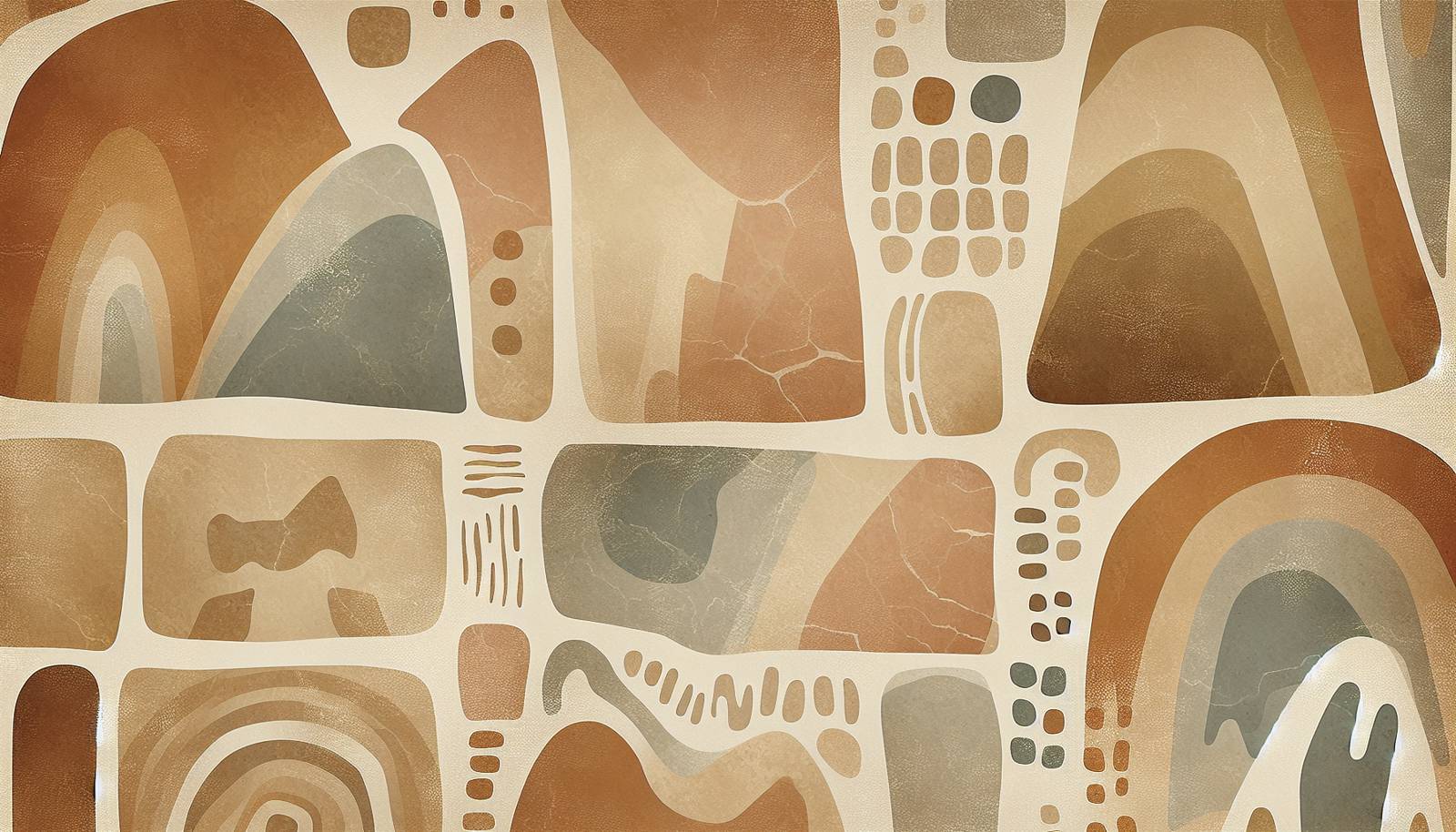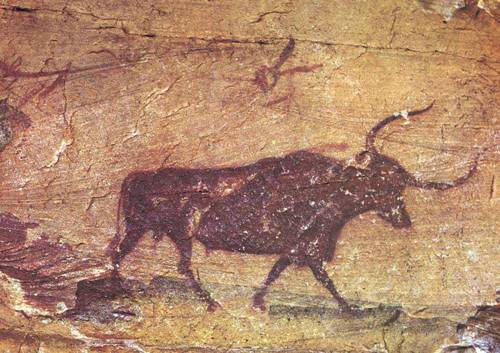
FAQ About The Impact of Neolithic Art on Contemporary Creativity

What is Neolithic art and why is it significant?
Neolithic art refers to the artistic expressions created during the Neolithic era, which dates from around 10,000 to 2,000 BCE. This period, also known as the New Stone Age, was marked by advances in agriculture and settlement which allowed humans to create more permanent structures and develop art. Neolithic art is significant because it reflects the cultural and social changes of the time, where art began to play a role in symbolic communication, rituals, and expressing communal identity. These forms included pottery, carvings, and megalithic structures.

How does Neolithic art influence contemporary artists?
Contemporary artists are often inspired by Neolithic art through the exploration of primitive symbols, forms, and themes that are reinterpreted in modern artistic expressions. The timeless nature of these ancient motifs, such as spirals, circles, and anthropomorphic figures, are integrated into various modern artworks to evoke a sense of connection to humanity's early artistic endeavors. Artists might use these as a foundation to address current themes of identity, community, and the relationship between humans and nature.

What are some examples of Neolithic art elements seen in modern art?
Examples of Neolithic elements in modern art include the use of geometric patterns and symbolism seen in textiles, ceramics, and painting. Contemporary artists might integrate elements like spirals and abstract figures into their work to reflect themes of fertility and continuity that were important in Neolithic culture. Additionally, the construction of large-scale installations or earthworks can echo the monumental architecture of Neolithic times, such as Stonehenge or other megalithic sites.

Why are Neolithic motifs attractive to modern-day artists?
Neolithic motifs are attractive to modern-day artists due to their universal and timeless nature. These symbols often convey fundamental human experiences and emotions, such as birth, life, death, and the cycles of nature. By incorporating these motifs, artists may create a dialogue between the past and present, exploring human continuity and the enduring aspects of human culture and expression.

How can Neolithic art forms be incorporated in contemporary design?
Neolithic art forms can be incorporated in contemporary design by using motifs and patterns in fashion, architecture, interior design, and decorative arts. Designers may draw inspiration from the simplistic yet profound designs typical of Neolithic artifacts, such as pottery patterns or stone carvings, subtly incorporating these into modern pieces to lend an air of antiquity and connection to the earth.

What mediums today showcase the influence of Neolithic art?
The influences of Neolithic art can be found in a variety of contemporary mediums such as sculpture, painting, architecture, and digital art. Artists employ Neolithic-inspired designs in installations and public art to engage viewers with historical themes. Likewise, the fashion industry might use Neolithic patterns and motifs to create culturally rich fabrics and accessories.

Can Neolithic art impact contemporary cultural narratives?
Yes, Neolithic art can impact contemporary cultural narratives by providing a rich source of symbolism and historical context that contemporary creators can draw upon. Neolithic art offers insight into the communal and spiritual lives of ancient societies, which can be used to address modern themes like community, identity, and our relationship with the natural world. This connection to the past can help shape contemporary stories and artistic expressions.

Are there any specific contemporary artists known for using Neolithic influences?
Contemporary artists known for incorporating Neolithic influences often explore themes of anthropology and primitive art. For example, British sculptor Antony Gormley uses human forms reminiscent of ancient times in his large-scale installations. Other artists, like Anish Kapoor, may delve into abstract forms that echo Neolithic symbolism and spirituality in their works, thus highlighting the enduring connection to ancient traditions.

What common themes found in Neolithic art resonate with modern creativity?
Common themes in Neolithic art that resonate with modern creativity include the exploration of human identity, spirituality, nature, and the cosmos. These themes are universal and timeless, allowing modern artists to connect with intrinsic human concerns about self-expression and understanding of the world. Such themes are often reinvented in modern contexts, exploring continuity and change in human societies.

How has the study of Neolithic art informed modern artistic techniques?
The study of Neolithic art has informed modern artistic techniques by encouraging experimentation with materials and forms used by early artists. Understanding the methods and materials of Neolithic creation, such as pottery-making and stone carving, can inspire contemporary artists to explore traditional craftsmanship or blend ancient techniques with modern technology for innovative results.

What is the relationship between Neolithic art and modern abstract art?
Neolithic art and modern abstract art share a relationship based on the use of simplified forms and symbolic representations that transcend specific narratives in favor of universal themes. Just as Neolithic artists used geometric shapes and symbols to convey spiritual or communal ideas, modern abstract artists may use similar strategies to evoke emotions or concepts without relying on realistic depictions. This focus on form and symbol allows for a direct dialogue between ancient and contemporary art.

How do prehistoric art forms compare to modern environmental art?
Prehistoric art forms, such as those from the Neolithic era, often reflect a deep connection to and reverence for the natural environment, a theme that resonates with modern environmental art. While Neolithic art was rooted in survival and the celebration of natural cycles, contemporary environmental art often addresses ecological concerns, sustainability, and our impact on the planet. Both draw from a foundational interaction with nature, although with differing focuses and contexts.

Does Neolithic art influence modern architectural designs?
Yes, Neolithic art influences modern architectural designs through the use of materials, forms, and structures that reflect ancient building techniques. Architects may take inspiration from the simplicity and functionality of Neolithic structures, such as the alignment with celestial events found in megaliths, to create spaces that harmonize with natural landscapes and emphasize sustainability and functionality.

What role do Neolithic symbols play in contemporary graphic design?
In contemporary graphic design, Neolithic symbols provide an aesthetic that is both ancient and timeless, often used to create a sense of mystery or historic depth. Designers might use these motifs to evoke connections to cultural heritage or to communicate ideas related to basic human experiences or natural elements. Such symbols can add cultural richness and historical context to contemporary visual projects.

How has the reinterpretation of Neolithic pottery influenced modern ceramic art?
The reinterpretation of Neolithic pottery has significantly influenced modern ceramic art by inspiring contemporary artists to explore traditional forms and techniques while integrating modern aesthetics. Neolithic pottery often features utilitarian forms and geometric designs that are replicated or remixed in today’s ceramic pieces, merging ancient craftsmanship with contemporary creativity, possibly even exploring new materials or technologies in the process.

What can contemporary artists learn from studying Neolithic art?
Contemporary artists can learn a lot from studying Neolithic art, such as the importance of symbolism, the power of simplicity in design, and the connection between art and daily life. These ancient artworks often had practical and ceremonial purposes, which can inspire modern artists to consider deeper meanings and purposes behind their creations. Additionally, understanding the historical context of these artworks can provide modern creators with insights into human expression transcending time.

In what ways do modern digital artists utilize Neolithic themes?
Modern digital artists may utilize Neolithic themes by incorporating ancient symbols and aesthetic principles into digital media and virtual environments. This can include the use of primitive motifs in digital illustrations or animations that explore historical narratives or create immersive experiences that connect audiences to archaic human stories in a modern setting. Digital art platforms allow for a creative fusion of past and present art forms.

Are Neolithic art influences seen in contemporary public art installations?
Yes, Neolithic art influences are often seen in contemporary public art installations, where artists create works that echo the monumental scale and communal importance of ancient structures. These installations may draw on themes of social connection and human history, using materials and forms inspired by Neolithic art to create spaces that encourage interaction and reflection among modern audiences.

What are the challenges of integrating Neolithic art elements in modern practices?
Integrating Neolithic art elements into modern practices can present challenges such as ensuring cultural sensitivity and authenticity while avoiding appropriation. Artists must balance the historical context and cultural significance of Neolithic motifs with contemporary interpretations. Additionally, translating ancient techniques and aesthetics into modern frameworks requires innovation and respect for the original cultural narratives.

How have Neolithic earthworks inspired contemporary landscape art?
Neolithic earthworks have inspired contemporary landscape art by showcasing the deep relationship between art and the natural environment. Artists today often look to the functional yet symbolic earthworks of the Neolithic period as a source of inspiration for creating land art that explores themes of nature, community, and continuity. These modern pieces can serve as sites for reflection on human interaction with natural landscapes.
